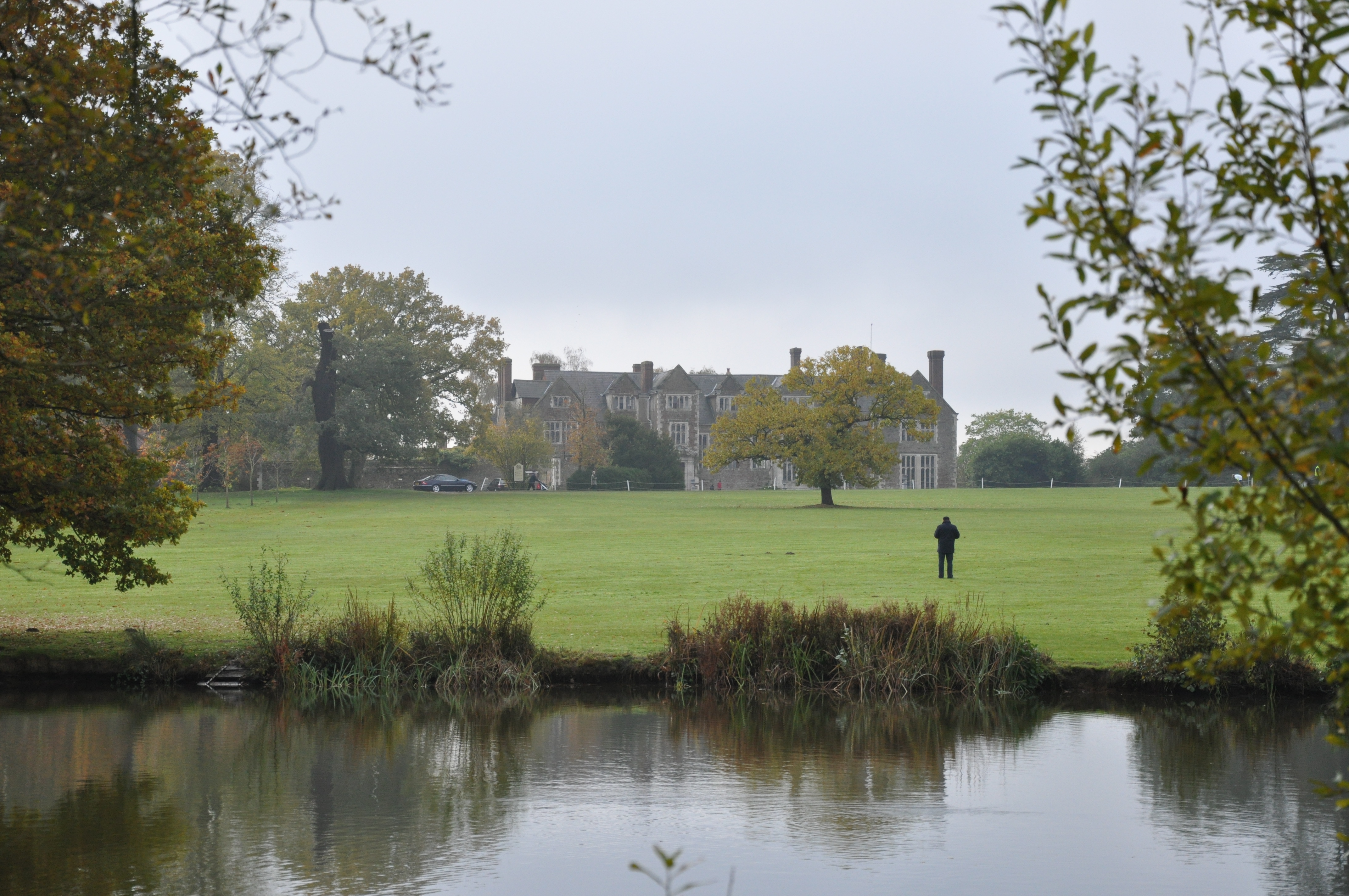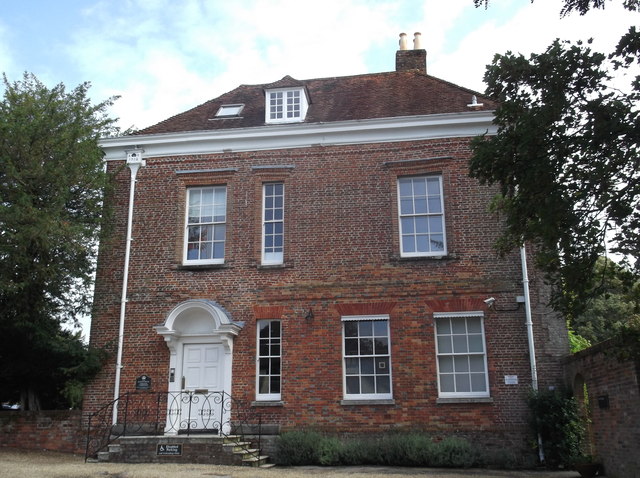|
William More (died 1600)
Sir William More (30 January 1520 – 20 July 1600), of Loseley, Surrey, was the son of Sir Christopher More. He was actively involved in local administration and in the enforcement of the Elizabethan religious settlement, and was a member of every Parliament during the reign of Queen Elizabeth I. He was the owner of property in the Blackfriars in which the first and second Blackfriars theatres were erected. Family William More was the son of Sir Christopher More, King's Remembrancer of the Exchequer (c.1483–16 August 1549), and Margaret Mugge or Mudge, the daughter of Walter Mugge (d.1495) or Mudge of Guildford, Surrey, by his wife, Joan. He was the grandson of a London fishmonger, John More, and his wife, Elizabeth. After the death of Margaret Mugge, More's father married, by 1535, Constance Sackville (d.1554), the daughter of Richard Sackville, but there were no issue of his second marriage.; ; . More had four brothers (Richard, two brothers named Christopher, and John), ... [...More Info...] [...Related Items...] OR: [Wikipedia] [Google] [Baidu] |
Loseley Park
Loseley Park is a large Tudor manor house with later additions and modifications south-west of Guildford, Surrey, England, in Artington close to the hamlet of Littleton. The estate was acquired by the direct ancestors of the current owners, the More-Molyneux family, at the beginning of the 16th century. The house built for Sir William More is a Grade I listed building, the highest rank in architecture or heritage. Loseley appears in the Domesday Book of 1086 as ''Losele''. It was held by Turald (Thorold) from Roger de Montgomery. Its Domesday assets were: 2 hides. It had 4 ploughs, of meadow. It rendered £3. The papers of Sir Thomas Cawarden, Master of the Revels, were formerly preserved in the house. Loseley Park is still the residence of the More-Molyneux family and is open to the public. The 17th-century tithe barn is available for weddings. The house The present house was built between 1562 and 1568 with stone brought from the ruins of Waverley Abbey. The new house rep ... [...More Info...] [...Related Items...] OR: [Wikipedia] [Google] [Baidu] |
John Dudley, 1st Duke Of Northumberland
John Dudley, 1st Duke of Northumberland (1504Loades 2008 – 22 August 1553) was an English general, admiral, and politician, who led the government of the young King Edward VI from 1550 until 1553, and unsuccessfully tried to install Lady Jane Grey on the English throne after the King's death. The son of Edmund Dudley, a minister of Henry VII executed by Henry VIII, John Dudley became the ward of Sir Edward Guildford at the age of seven. Dudley grew up in Guildford's household together with his future wife, Guildford's daughter Jane, with whom he was to have 13 children. Dudley served as Vice-Admiral and Lord Admiral from 1537 until 1547, during which time he set novel standards of navy organisation and was an innovative commander at sea. He also developed a strong interest in overseas exploration. Dudley took part in the 1544 campaigns in Scotland and France and was one of Henry VIII's intimates in the last years of the reign. He was also a leader of the religious re ... [...More Info...] [...Related Items...] OR: [Wikipedia] [Google] [Baidu] |
Farnham Castle
Farnham Castle is a 12th-century castle in Farnham, Surrey, England. It was formerly the residence of the Bishops of Winchester. History Built in 1138 by Henri de Blois, Bishop of Winchester, grandson of William the Conqueror, Farnham castle became the home of the Bishops of Winchester for over 800 years. The original building was demolished by Henry II in 1155 after ' the Anarchy' and then rebuilt in the late 12th and early 13th centuries. In the early 15th century, it was the residence of Cardinal Henry Beaufort who presided at the trial of Joan of Arc in 1431. It is for this reason that St Joan of Arc's Church in Farnham is dedicated to her. The castle's architecture reflects changing styles through the ages, making it one of the most important historical buildings in the south of England. It is an impressive stone motte and bailey fortress, and has been in almost continuous occupation since the 12th century. The large motte was formed around the massive foundations ... [...More Info...] [...Related Items...] OR: [Wikipedia] [Google] [Baidu] |
Constable
A constable is a person holding a particular office, most commonly in criminal law enforcement. The office of constable can vary significantly in different jurisdictions. A constable is commonly the rank of an officer within the police. Other people may be granted powers of a constable without holding this title. Etymology Historically, the title comes from the Latin ''comes stabuli'' ( attendant to the stables, literally ''count of the stable'') and originated from the Roman Empire; originally, the constable was the officer responsible for keeping the horses of a lord or monarch.p103, Bruce, Alistair, ''Keepers of the Kingdom'' (Cassell, 2002), Constable Encyclopædia Britannica online The title was imported to the monarchy, monarchies of Middle Ages, medieval Europe, and in many countries developed into a high military rank an ... [...More Info...] [...Related Items...] OR: [Wikipedia] [Google] [Baidu] |
Windsor Forest
Windsor may refer to: Places Australia *Windsor, New South Wales ** Municipality of Windsor, a former local government area *Windsor, Queensland, a suburb of Brisbane, Queensland **Shire of Windsor, a former local government authority around Windsor, Queensland **Town of Windsor, a former local government authority around Windsor, Queensland *Windsor, South Australia, a small town in the northern Adelaide Plains * Windsor Gardens, South Australia, a suburb of Adelaide *Windsor, Victoria, a suburb of Melbourne Canada *Grand Falls-Windsor, Newfoundland and Labrador *Windsor, Nova Scotia *Windsor, Ontario *Windsor, Quebec New Zealand *Windsor, New Zealand, a township in North Otago United Kingdom *Windsor, Berkshire, a town near London **Windsor Castle, Windsor, Berkshire **Windsor Great Park **Windsor (UK Parliament constituency), the constituency centred on this town **Old Windsor, a village near Windsor *Windsor, Belfast, a suburb *Windsor, Cornwall, a hamlet * Windsor, Lincoln ... [...More Info...] [...Related Items...] OR: [Wikipedia] [Google] [Baidu] |
Verderer
Verderers are forestry officials in England who deal with common land in certain former royal hunting areas which are the property of the Crown. The office was developed in the Middle Ages to administer forest law on behalf of the King. Verderers investigated and recorded minor offences such as the taking of venison and the illegal cutting of woodland, and dealt with the day-to-day forest administration. In the modern era, verderers are still to be found in the New Forest, the Forest of Dean, and Epping Forest, where they serve to protect commoning practices, and conserve the traditional landscape and wildlife. Origins Verderers were originally part of the ancient judicial and administrative hierarchy of the vast areas of English forests and Royal Forests set aside by William the Conqueror for hunting. The title Verderer comes from the Norman word ‘vert’ meaning green and referring to woodland. These forests were divided into provinces each having a Chief Justice who travelled ... [...More Info...] [...Related Items...] OR: [Wikipedia] [Google] [Baidu] |
Sussex
Sussex (), from the Old English (), is a historic county in South East England that was formerly an independent medieval Anglo-Saxon kingdom. It is bounded to the west by Hampshire, north by Surrey, northeast by Kent, south by the English Channel, and divided for many purposes into the ceremonial counties of West Sussex and East Sussex. Brighton and Hove, though part of East Sussex, was made a unitary authority in 1997, and as such, is administered independently of the rest of East Sussex. Brighton and Hove was granted city status in 2000. Until then, Chichester was Sussex's only city. The Brighton and Hove built-up area is the 15th largest conurbation in the UK and Brighton and Hove is the most populous city or town in Sussex. Crawley, Worthing and Eastbourne are major towns, each with a population over 100,000. Sussex has three main geographic sub-regions, each oriented approximately east to west. In the southwest is the fertile and densely populated coastal plain. Nort ... [...More Info...] [...Related Items...] OR: [Wikipedia] [Google] [Baidu] |
High Sheriff Of Surrey
The list of known High Sheriffs of Surrey extends back to 1066. At various times the High Sheriff of Surrey was also High Sheriff of Sussex (1229–1231, 1232–1240, 1242–1567, 1571–1635). 1066–1228 (High Sheriffs of Surrey only) 1229–1398 (Sheriffs of Surrey and Sussex) 1399–1509 (High Sheriffs of Surrey and Sussex) 1509–1566 (High Sheriffs of Surrey and Sussex) 1566–1635 1636–1702 (High Sheriffs of Surrey only) 1702–1799 19th century 20th century 21st century *2021: Dr Julie Llewelyn References {{High Shrievalties Surrey Surrey () is a ceremonial and non-metropolitan county in South East England, bordering Greater London to the south west. Surrey has a large rural area, and several significant urban areas which form part of the Greater London Built-up Area. ... Local government in Surrey People from Surrey History of Surrey Surrey-related lists ... [...More Info...] [...Related Items...] OR: [Wikipedia] [Google] [Baidu] |
Protestant
Protestantism is a Christian denomination, branch of Christianity that follows the theological tenets of the Reformation, Protestant Reformation, a movement that began seeking to reform the Catholic Church from within in the 16th century against what its followers perceived to be growing Criticism of the Catholic Church, errors, abuses, and discrepancies within it. Protestantism emphasizes the Christian believer's justification by God in faith alone (') rather than by a combination of faith with good works as in Catholicism; the teaching that Salvation in Christianity, salvation comes by Grace in Christianity, divine grace or "unmerited favor" only ('); the Universal priesthood, priesthood of all faithful believers in the Church; and the ''sola scriptura'' ("scripture alone") that posits the Bible as the sole infallible source of authority for Christian faith and practice. Most Protestants, with the exception of Anglo-Papalism, reject the Catholic doctrine of papal supremacy, ... [...More Info...] [...Related Items...] OR: [Wikipedia] [Google] [Baidu] |
Thomas Cawarden
Sir Thomas Cawarden (died 25 August 1559) of Bletchingley, Nonsuch Park and East Horsley (Surrey) was Master of the Revels to Henry VIII of England, Edward VI, and Mary I. Background Thomas was the son of William Cawarden, a cloth-fuller and citizen of London. In 1528, he was apprenticed to a mercer in London, Owen Hawkins. By 1542 Cawarden had married. His wife's first name was Elizabeth; her surname is unknown. Career In 1542 and 1547 he was elected Member of Parliament for Bletchingley which did not have town status and had a smaller forty shilling freeholder electorate than the average of the time, poor enough to be challenged in the courts in 1614. In 1544 Sir Thomas Cawarden received a patent as Master of Revels and Tents, becoming the first head of an independent office and was knighted at Boulogne in September of that year. Tents were provided for festivals, royal progresses, and in military expeditions. In July and August 1547, Cawarden provided 'hales', 'roundhous ... [...More Info...] [...Related Items...] OR: [Wikipedia] [Google] [Baidu] |




